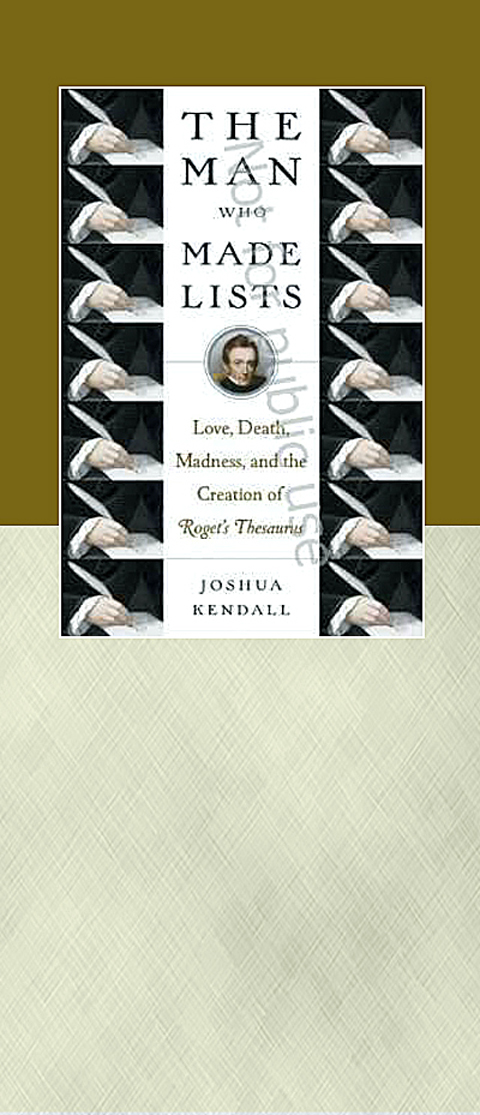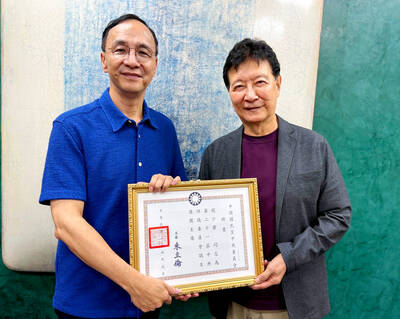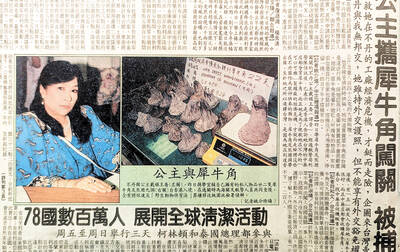Sylvia Plath loved her thesaurus so much that she called herself "Roget's strumpet." She consulted it all the time while working on her first collection, The Colossus, and it shows. Plath later said she couldn't bear to reread those poems. Dylan Thomas was another thesaurus thumber, and in his work, too, the words it supplied were not always improvements.
As reference books go, the thesaurus has had a somewhat checkered history, in fact, and has probably occasioned as much bad writing as good. But its oddest feature is mostly invisible now that synonym finders have become virtually embedded in our computers. There's little trace anymore of Peter Mark Roget's original classification scheme, which divided up all of language into categories and subcategories.
Roget (1779-1869) was an obsessive list maker and classifier, and in this new biography, The Man Who Made Lists: Love, Death, Madness and the Creation of 'Roget's Thesaurus,' Joshua Kendall suggests - with something like obsessive frequency - that the habit was a kind of bulwark shoring him up against depression and mental instability.

Madness ran in the family, at least on his mother's side. Catherine Roget was a Romilly, from a family of French Huguenots who had settled in London, and her mother was a lifelong depressive, possibly a schizophrenic. Her brother, Samuel Romilly, a famous legal reformer, slashed his own throat after his wife died; and after the death of her husband (when Peter Roget was 4) Catherine became needy, neurotic and eventually psychotic. Peter Roget's sister and daughter also suffered from depression and breakdowns.
At an early age, Roget began making lists - of deaths, of events, of interesting words - and as he grew older, he also classified his experience according to an odd binary scheme, so that people, for example, were either "ordinary" or "peculiar," and landscapes were "beautiful" or "not beautiful." He counted all the steps he took during the day, had a fetish about cleanliness and was socially inept, failing to pick up obvious emotional clues.
At the very least, he suffered from obsessive-compulsive disorder, but some of his behavior also suggest that, were his condition diagnosed today, he might be classified as someone with high-functioning Asperger's syndrome. It seems likely, in other words, that his passion for lists - for order and for categories - was not so much a heroic defense mechanism, as Kendall argues, but simply an involuntary part of who he was.
Whatever else he was, Roget was immensely accomplished, even for an age when polymaths were far more common than they are now. He trained as a doctor, and though his poor social skills kept him from being much of a clinician, he was greatly in demand as a lecturer in anatomy and physiology. He invented the log-log scale for the slide rule, wrote an influential book on natural history and contributed numerous articles to the Encyclopaedia Britannica. He was also one of the first to observe that the retina sees a series of still images as a continuous picture - a discovery that led to the invention of the zoetrope, and eventually to motion pictures.
The thesaurus - or to give it its full title, Roget's Thesaurus of English Words and Phrases Classified and Arranged So as to Facilitate the Expression of Ideas and Assist in Literary Composition - was almost an afterthought. Roget began it when he was 26, then put it aside until he had retired from science and was eager to get his name before the public again.
If Kendall's writing has a fault, it's a tendency toward mind reading and novelization. But this is an almost forgivable lapse, because Roget is a hard subject to warm to. He led an extremely interesting life without being very interesting himself. He was aloof, humorless and self-absorbed, and so tamped down that he seems to have been incapable of strong feeling.
Another figure who comes inevitably to mind is Samuel Johnson, also an obsessive-compulsive and a collector of words. But Johnson had a largeness of spirit lacking in Roget, and words mattered to him not just as specimens but because of their emotional freight and what they could be made to say. From Kendall's book you get the sense that, for Roget, one word was pretty much the same as another.

Next week, candidates will officially register to run for chair of the Chinese Nationalist Party (KMT). By the end of Friday, we will know who has registered for the Oct. 18 election. The number of declared candidates has been fluctuating daily. Some candidates registering may be disqualified, so the final list may be in flux for weeks. The list of likely candidates ranges from deep blue to deeper blue to deepest blue, bordering on red (pro-Chinese Communist Party, CCP). Unless current Chairman Eric Chu (朱立倫) can be convinced to run for re-election, the party looks likely to shift towards more hardline

Last week the story of the giant illegal crater dug in Kaohsiung’s Meinong District (美濃) emerged into the public consciousness. The site was used for sand and gravel extraction, and then filled with construction waste. Locals referred to it sardonically as the “Meinong Grand Canyon,” according to media reports, because it was 2 hectares in length and 10 meters deep. The land involved included both state-owned and local farm land. Local media said that the site had generated NT$300 million in profits, against fines of a few million and the loss of some excavators. OFFICIAL CORRUPTION? The site had been seized

Sept. 15 to Sept. 21 A Bhutanese princess caught at Taoyuan Airport with 22 rhino horns — worth about NT$31 million today — might have been just another curious front-page story. But the Sept. 17, 1993 incident came at a sensitive moment. Taiwan, dubbed “Die-wan” by the British conservationist group Environmental Investigation Agency (EIA), was under international fire for being a major hub for rhino horn. Just 10 days earlier, US secretary of the interior Bruce Babbitt had recommended sanctions against Taiwan for its “failure to end its participation in rhinoceros horn trade.” Even though Taiwan had restricted imports since 1985 and enacted

Enter the Dragon 13 will bring Taiwan’s first taste of Dirty Boxing Sunday at Taipei Gymnasium, one highlight of a mixed-rules card blending new formats with traditional MMA. The undercard starts at 10:30am, with the main card beginning at 4pm. Tickets are NT$1,200. Dirty Boxing is a US-born ruleset popularized by fighters Mike Perry and Jon Jones as an alternative to boxing. The format has gained traction overseas, with its inaugural championship streamed free to millions on YouTube, Facebook and Instagram. Taiwan’s version allows punches and elbows with clinch striking, but bans kicks, knees and takedowns. The rules are stricter than the